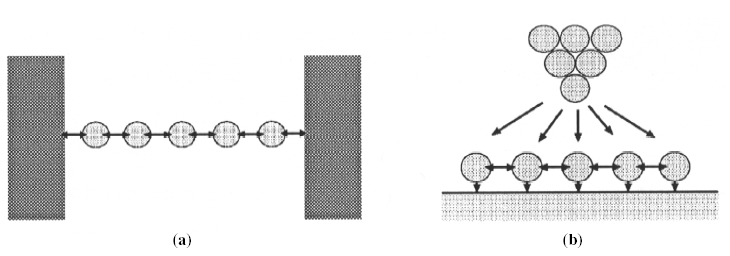A tight binding model for scanning tunneling microscopy images of a molecule adsorbed on a metal surface is described. The model is similar in spirit to that used to analyze conduction along molecular wires connecting two metal leads and makes it possible to relate these two measurements and the information that may be gleaned from the corresponding results. In particular, the dependence of molecular conduction properties along and across a molecular chain on the chain length, intersite electronic coupling strength and on thermal and disorder effects are discussed and contrasted. It is noted that structural or chemical defects that may affect drastically the conduction along a molecular chain have a relatively modest influence on conduction across the molecular wire in the transversal direction.

A tight binding model for scanning tunneling microscopy images of a molecule adsorbed on a metal surface is described. The model is similar in spirit to that used to analyze conduction along molecular wires connecting two metal leads and makes it possible to relate these two measurements and the information that may be gleaned from the corresponding results. In particular, the dependence of molecular conduction properties along and across a molecular chain on the chain length, intersite electronic coupling strength and on thermal and disorder effects are discussed and contrasted. It is noted that structural or chemical defects that may affect drastically the conduction along a molecular chain have a relatively modest influence on conduction across the molecular wire in the transversal direction.
